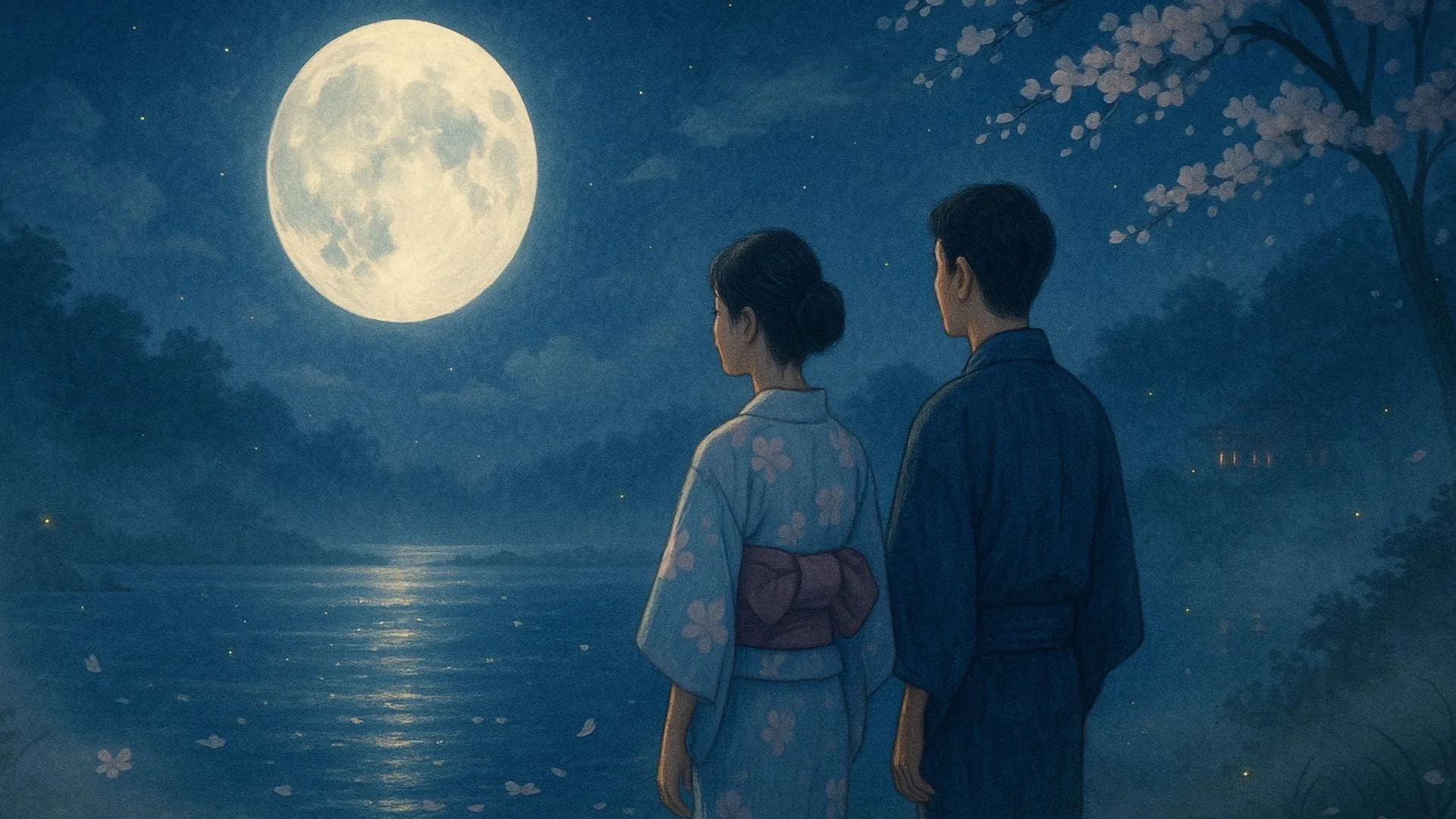How The Moon Is Beautiful Isn’t It Meaning Became a Subtle Confession of Love
Language often carries hidden emotions and cultural nuances that go beyond literal translations. A simple phrase can become a poetic confession or an indirect way of expressing deep feelings. One such phrase that has captured the attention of people worldwide is “the moon is beautiful isn’t it.” At first glance, it may sound like a comment about nature, but in reality, it holds a much deeper sentiment tied to culture, literature, and the subtleties of unspoken love. To fully grasp the moon is beautiful isn’t it meaning, we need to look into Japanese culture, literary history, and the philosophy behind expressing emotions indirectly. This article explores the origins of this phrase, its deeper interpretation, how it is viewed in modern times, and why it continues to resonate with people who appreciate subtle confessions of love. By the end, you’ll understand why this simple sentence carries such lasting emotional power in both literature and everyday conversation.
Origins of the Phrase
The phrase “the moon is beautiful isn’t it” is widely attributed to Natsume Sōseki, a Japanese novelist from the Meiji era. According to literary anecdotes, he suggested this expression as a more natural and poetic way to translate “I love you” into Japanese. At that time, direct declarations of love were considered awkward and unnatural in Japanese culture, which valued subtlety and indirect communication.
Instead of bluntly saying “I love you,” a person could look at the moon with someone they cherished and quietly remark, “The moon is beautiful, isn’t it?” The implication was clear: the beauty of the moon symbolized the depth of their feelings. It allowed the speaker to express affection without breaking cultural norms of modesty.
While historians debate whether Sōseki actually coined this phrase or if it emerged from broader cultural practice, the association with him has made it a celebrated part of Japanese literary heritage.
Why This Phrase Feels Special
What makes this phrase powerful is not the literal meaning but the emotional undertone behind it. The moon is universally symbolic—it represents beauty, serenity, longing, and timelessness. By linking love to the moon, the phrase conveys emotions without needing direct words.
Some reasons this phrase feels so meaningful include:
- Indirectness: In cultures where emotional restraint is valued, indirect expressions can often carry more weight than blunt confessions.
- Universality of the moon: Unlike a specific gift or place, the moon can be seen by everyone, anywhere, creating a shared experience.
- Romantic imagery: The moonlight often symbolizes intimacy and vulnerability, making it a natural metaphor for love.
- Cultural respect: It aligns with Japanese aesthetics like wabi-sabi (appreciation of subtle beauty) and mono no aware (sensitivity to fleeting moments).
Through these layers, the phrase has become timeless and emotionally rich.
What Does The Moon is Beautiful Isn’t It Meaning Truly Represent
At its core, “the moon is beautiful isn’t it” means “I love you” without actually saying the words. It represents an indirect declaration of affection. But beyond that, it carries a deeper philosophy about how humans express emotions.
- Love in silence: It suggests that love does not always need direct articulation—sometimes quiet companionship under the same moon speaks louder than words.
- Shared intimacy: When two people look at the moon together, they share a moment that transcends language.
- Respect for emotion: The phrase highlights the respect given to emotions in Japanese culture, where understatement can be more powerful than exaggeration.
- Eternal beauty: Just as the moon has existed for centuries, it symbolizes feelings that are constant and enduring.
Thus, the phrase is not just a romantic confession but also a reflection of a cultural mindset that treasures subtle communication.
How the Phrase is Used Today
Even though its origins date back over a century, the phrase continues to be used in modern contexts, both in Japan and globally. Thanks to the internet, anime, and literature, many people outside Japan have discovered and embraced this expression.
Common uses today include:
- In literature and films: Characters use it as a poetic substitute for expressing love.
- In anime and manga: It often appears in romantic storylines, making it popular among younger audiences.
- In daily conversation: Couples or close friends may use it as an inside reference, especially when enjoying a beautiful night sky together.
- Online culture: Social media users frequently share the phrase to symbolize subtle or hidden affection.
This shows how language evolves—what started as a literary suggestion is now a cultural symbol of indirect romance.
Why People Around the World Connect With It
Even if someone is not familiar with Japanese traditions, the phrase resonates because it captures a universal truth: love is often best felt in small, quiet moments. Unlike grand declarations, the statement ties emotion to something as natural as the night sky.
People connect with it for several reasons:
- It feels timeless and poetic.
- It avoids clichés while still being romantic.
- It creates intimacy through shared observation.
- It emphasizes emotion over words, something many people find relatable in real relationships.
By blending cultural nuance with universal feelings, the phrase bridges gaps between societies and generations.
Who Usually Uses This Expression
While anyone can use it, the phrase often appeals to people who prefer subtle communication. It may be used by:
- Writers and poets looking for layered expressions of love.
- Couples who enjoy indirect, meaningful gestures.
- Fans of Japanese culture, anime, or literature.
- Individuals who struggle with saying “I love you” directly but still want to express affection.
In this way, the phrase is not limited by language or geography—it adapts to different personalities and situations.
Final Thoughts
The phrase “the moon is beautiful isn’t it” is more than a poetic remark about the night sky. It is an indirect yet powerful way of expressing love, shaped by Japanese cultural traditions and carried forward through literature and modern media. To understand the moon is beautiful isn’t it meaning, one must look at how its subtlety, imagery, and emotional resonance make it timeless, allowing people around the world to connect with it. By appreciating its meaning, we also learn something important about human communication: sometimes, love does not need to be spoken outright. A shared moment under the moonlight, paired with this gentle phrase, can often convey more than the simplest “I love you.”
Clearing Up Confusion (FAQs)
Is “the moon is beautiful isn’t it” really a way to say “I love you”?
Yes, it is a poetic and indirect way of saying “I love you,” often attributed to Japanese novelist Natsume Sōseki.
Do Japanese people still use this phrase today?
While it is not commonly used in everyday speech, it appears in literature, media, and among people familiar with its cultural meaning.
Why use the moon as a symbol of love?
The moon represents beauty, eternity, and shared experience, making it an ideal metaphor for expressing affection.
Can the phrase be used platonically?
Although it is primarily romantic, context matters. Between friends, it could simply be appreciation of nature.
How did this phrase become popular outside Japan?
It spread through translations of literature, anime, social media, and global interest in Japanese culture.






